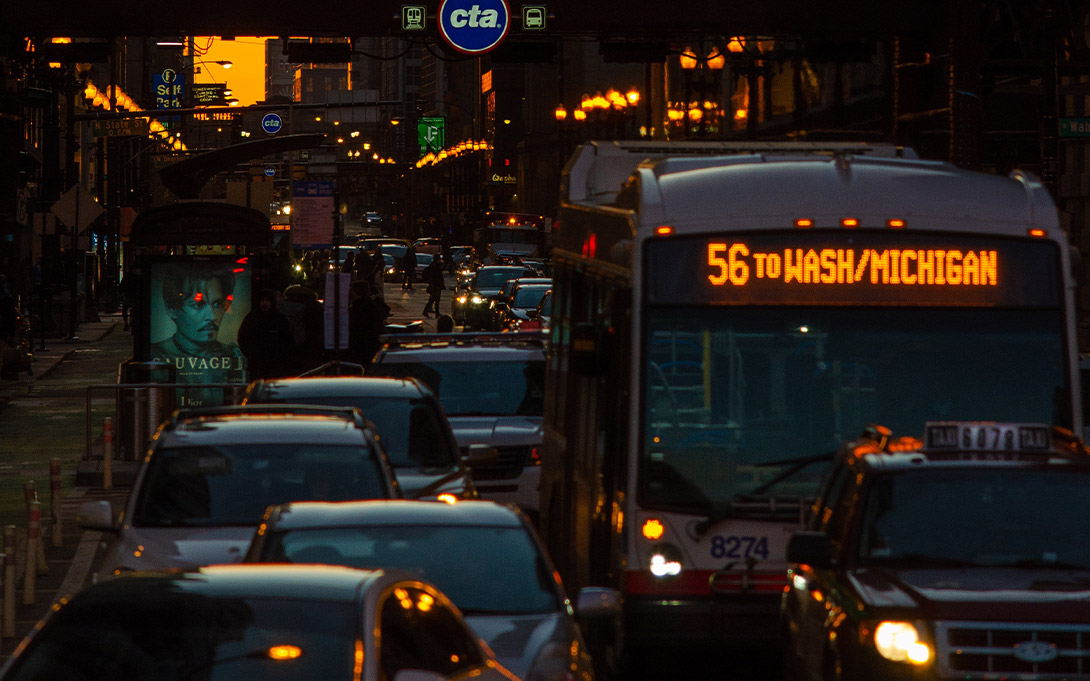
Nearly 1 in 5 adults in the U.S. lack access to reliable transportation, making it one of the country's most common forms of material hardship, say University of Michigan researchers.
In a new study published in Social Indicators Research, the researchers found that 19% of adults reported experiencing transportation insecurity in the past month—compared with 16% who reported food insecurity, 13% with unmet medical needs, 9% with housing insecurity, 7% facing difficulty paying bills and 4% with utility shutoffs.
Transportation issues, they say, have been excluded from national conversations about material hardship for decades due to the lack of a reliable measurement tool.
That gap has now been filled by the Transportation Security Index, a scientifically validated instrument developed by Alexandra Murphy, associate director of social science research at Mcity, and colleagues Alix Gould-Werth and Jamie Griffin.
"Transportation insecurity makes it difficult for people to reach destinations critical to their well-being—like workplaces, health care providers, grocery stores and loved ones. This study shows that it's not only common but deeply interconnected with other forms of hardship," said Murphy, who also has appointments at the Institute for Social Research and Poverty Solutions.
The research, conducted in collaboration with Natasha Pilkauskas of the Ford School of Public Policy and ISR's Population Studies Center, utilized nationally representative survey data in 2022 to examine the comparison of transportation insecurity with other hardships and its impact on health.
The index that made this research possible didn't emerge overnight. With seed funding from the Population Studies Center, Murphy and Gould-Werth began building a definition of transportation insecurity in 2014.
Their index, which captures individuals' lived experiences with transportation insecurity– such as arriving late at destinations due to unreliable transportation or skipping trips altogether—has now been adopted by government agencies, including the Minnesota Department of Transportation. It will also appear in the upcoming wave of the nationally recognized Health and Retirement Study.
"The study revealed that adults with lower incomes, those with disabilities and people living in urban areas are especially vulnerable to transportation insecurity—and often simultaneously face other hardships," said Gould-Werth, who has a doctoral degree from U-M. "Food insecurity stands out as most closely tied to transportation challenges."
The researchers found that these two problems often happen together. They also found that the demographic groups most likely to experience transportation insecurity are those disproportionately affected by other hardships—underscoring how different challenges can accumulate for the same people.
The study also links transportation insecurity to poor health outcomes. Adults experiencing transportation hardship are 6% more likely to report poor health and 11% more likely to report depressive symptoms, a magnitude of association similar to that seen with food insecurity and unmet medical needs.
"This was the first study to consider the extent to which transportation insecurity is related to other forms of material hardship," Pilkauskas said. "We now know that transportation hardship behaves similarly to food insecurity—and that it may be just as important to address if we hope to improve health and well-being nationwide."
A recent report from the National Academies of Sciences, Engineering and Medicine citing the Transportation Security Index called for broader use of tools to measure transportation insecurity, indicating that this issue is gaining national attention.
"Our approach mirrors the logic of the Food Security Index developed in the 1990s," Murphy said. "We focused on the symptoms of transportation insecurity at the individual level—how people experience it in everyday life—rather than focusing on people's mode of transit, their destinations, or considering the neighborhood where they live.
As the National Academies' report mentions, this is a crucial shift "expanding the usual focus of physical performance of infrastructure to understand whether transportation is meeting people’s needs" and enabling researchers to "identify less obvious transportation solutions.”
As policymakers seek solutions to reduce poverty and promote health, researchers argue that transportation must be part of the conversation. Addressing how people move through their daily lives may prove just as vital as ensuring there's food on their plates, the researchers say.
"At a time when millions of Americans stand to lose crucial government benefits and the cost of everyday items is rising, this work also calls us to better understand the linkages between transportation insecurity and other hardships," Murphy said. "Would improving transportation alleviate food insecurity or enable families to pay their utility bills? Or vice versa? Better understanding how these hardships affect Americans and are interrelated may prove crucial to addressing escalating needs."
Written by Fernanda Pires and Tevah Platt for Michigan News

